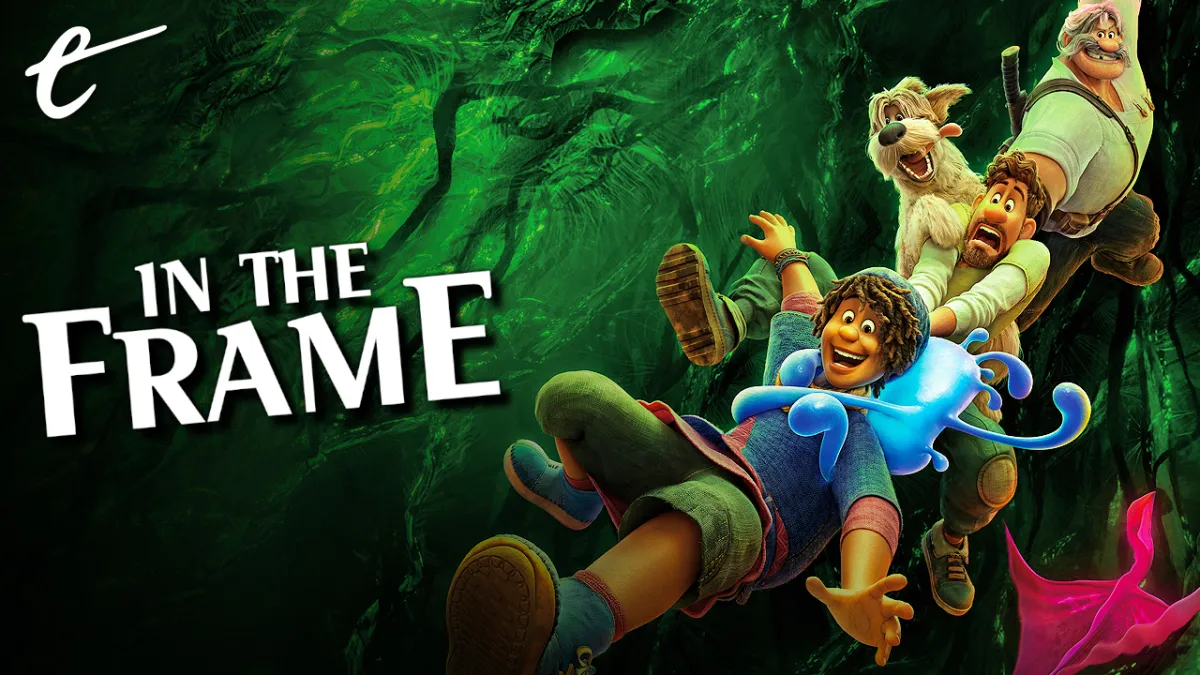This article contains very slight spoilers for Disney’s new animated film, Strange World, in its discussion of how it connects to Disney’s prior attempts to connect explicitly with boys.
Strange World is something of a throwback to an oft-overlooked chapter in Disney’s history.
Strange World is obviously built as an homage to pulpy old-fashioned adventure stories. The title evokes classic science fiction magazines like Amazing Stories or Astounding Science Fiction. The film itself closes with the revelation that Strange World is itself an anthology comic book series, the film’s animation transitioning to comic book panels as the camera pulls back to look at the book itself. It’s a movie that is built with an obvious and deep abiding affection for that kind of storytelling.
Strange World focuses on three generations of the Clade family. Jaeger Clade (Dennis Quaid) is a burly and mustached explorer. His son, Searcher (Jake Gyllenhaal), is a farmer and inventor. Searcher’s son, Ethan (Jaboukie Young-White), isn’t necessarily sure what he wants to be. The Clades live in the isolated community of Avalonia, a town that is cut off from the outside world by a perilous mountain range.
Jaeger has dedicated his life to discovering what lies beyond those icy peaks. During one expedition, Searcher encounters a strange plant that generates incredible power. He argues for bringing the plant, which he names “Pando,” back to Avalonia as an energy source. Jaeger insists on pressing ahead. The two fight, with Jaeger disappearing into the mountains and Searcher returning home to great success. Searcher settles down and starts a family.
When the latest crop of Pando starts failing, Searcher is enlisted on a dangerous adventure to find the cause of the problem. Boarding the airship “Venture,” Searcher travels deep into the caverns below Avalonia. Accompanied by his wife Meridian (Gabrielle Union) and their son Ethan, Searcher is confronted by a new world populated by a variety of strange and exotic creatures that threaten to upend his understanding of the world around him.
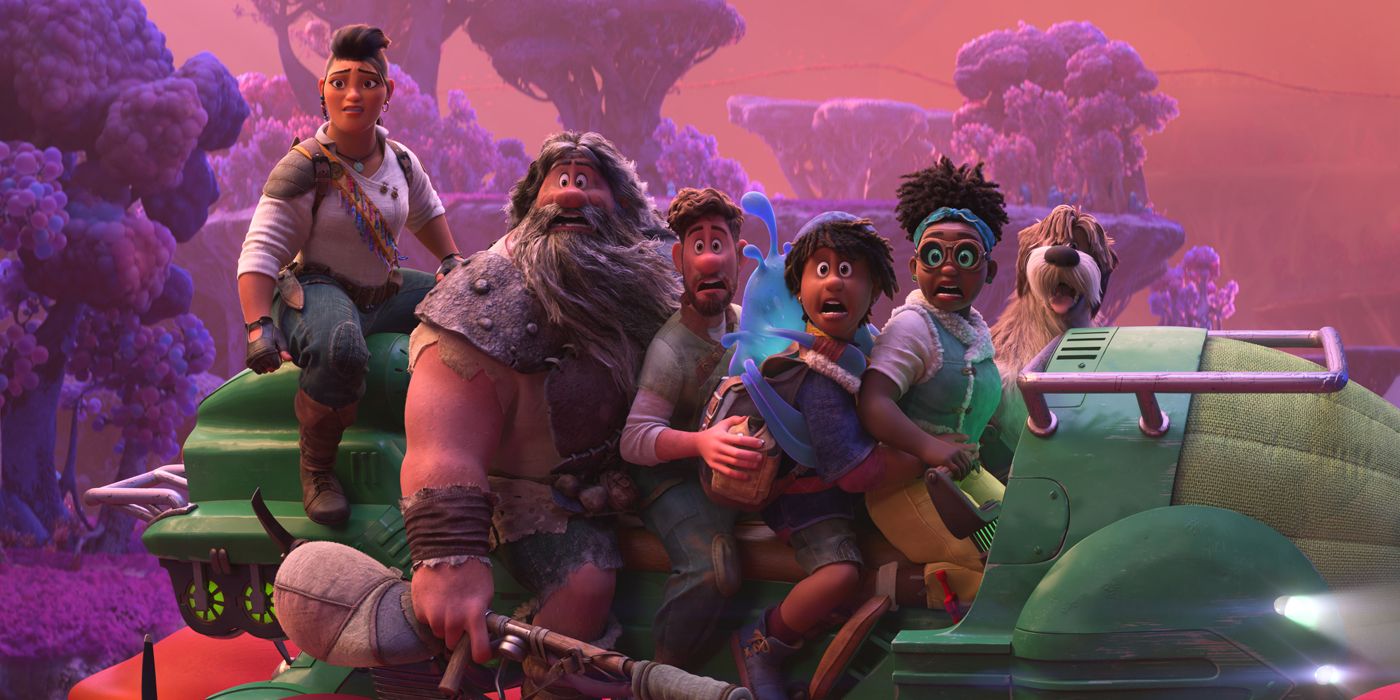
Strange World marks a departure from the Disney animated films of the past decade. Discounting the work of subsidiaries like Pixar or 20th Century Fox Animation, Disney’s recent animated output has been dominated by reworkings of the company’s classic “princess” template: Frozen, Moana, Frozen II, Raya and the Last Dragon, and Encanto. Even then, Strange World also stands apart from the obvious outliers to this trend, like the Wreck-It Ralph films or the superheroes of Big Hero 6.
Strange World is perhaps closest to something like Zootopia, a movie that exists in parallel with those reimaginings of the classic “princess” narrative as a modernized homage to an older template of Disney animation. Zootopia felt like an attempt to bring the company’s classic “talking animal” pictures like Robin Hood and The Lion King into the 21st century. Strange World does something similar for another wave of Disney animation.
A lot of coverage of Disney’s animation history focuses on “the Disney Renaissance” — the run of critically and commercially successful films that followed The Little Mermaid. Allowing for exceptions like The Lion King, The Hunchback of Notre Dame, and Hercules, these movies were largely built around the company’s “princess” brand. Even Aladdin could be considered part of the trend. After all, Jasmine (Linda Larkin) is one of the company’s iconic princesses.
By the end of the 1990s, that creative hot streak was winding down. While none of the films were outright bombs, budgets had grown faster than box office returns and critical reception was dropping off. Despite the company seeming unassailable just a couple of years earlier, Disney implemented cost-cutting measures and laid off staff in its animation department in 1999. Even outside of Disney, there was a sense that the industry was in turmoil.
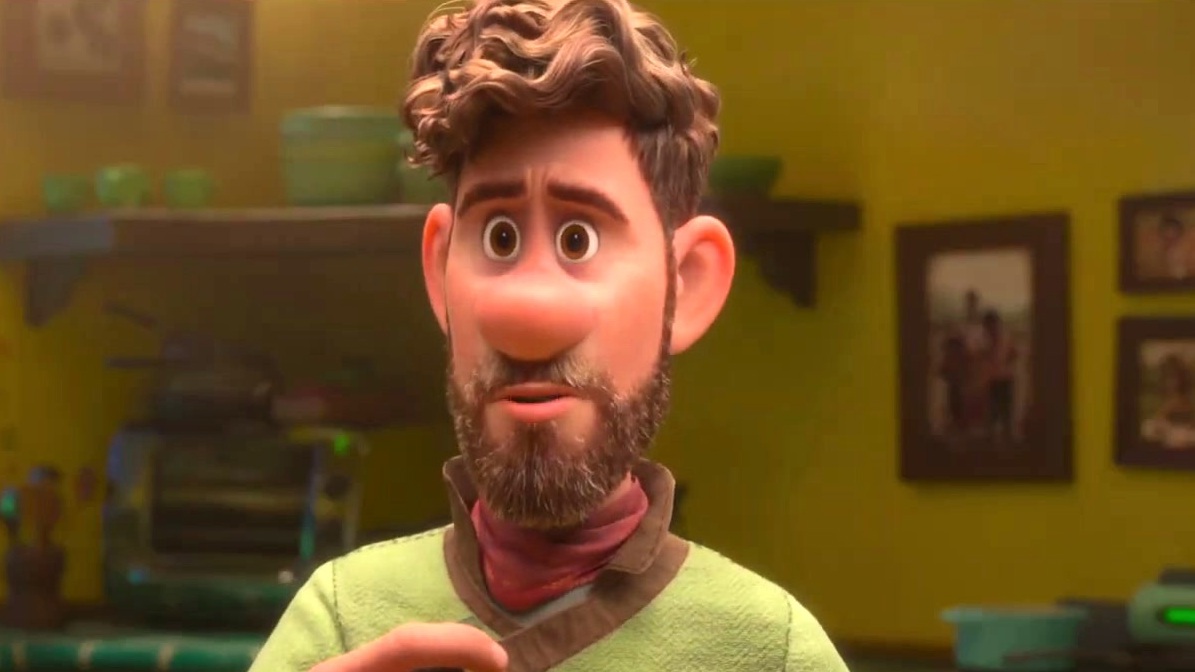
As such, there was an appetite for a new approach within Disney. The company began to push away from the iconography and imagery of the Disney Renaissance. Movies like The Emperor’s New Groove and Lilo and Stitch did this by embracing an irreverent attitude, often explicitly mocking those earlier classics. However, there was another wave of movies that emerged in parallel with this, riffing on old-fashioned pulpy adventure serials.
The trend began with Tarzan in 1999, based on the classic Edgar Rice Burroughs character, but became more pronounced with Atlantis: The Lost Empire two years later. According to director Kirk Wise, Atlantis was developed as a clear departure from what had come before. “We wanted to make an Adventureland movie instead of a Fantasyland movie,” Wise explained of the decision to build the movie around a bunch of explorers and mercenaries.
Atlantis took its cues from the same pop culture that influenced Strange World, blending science fiction and pulpy adventure in a heady cocktail. Atlantis producer Don Hahn drew a straight line from Disney’s live-action adaptations of classic stories like Treasure Island and 20,000 Leagues Under the Sea in the 1950s. That line continues to Strange World, from big ideas like its world hidden beneath the surface and smaller details like cool flying bikes.
Disney wasn’t the only studio telling these stories at the turn of the millennium. Overseen by former Disney chairman Jeffrey Katzenberg, the early hand-drawn films from DreamWorks Animation also skewed to retro “men-on-adventures” narratives with The Road to El Dorado in 2000 and Sinbad: Legend of the Seven Seas in 2003. These were similarly rebellious, with The Road to El Dorado generating debate over whether it was appropriate for kids.
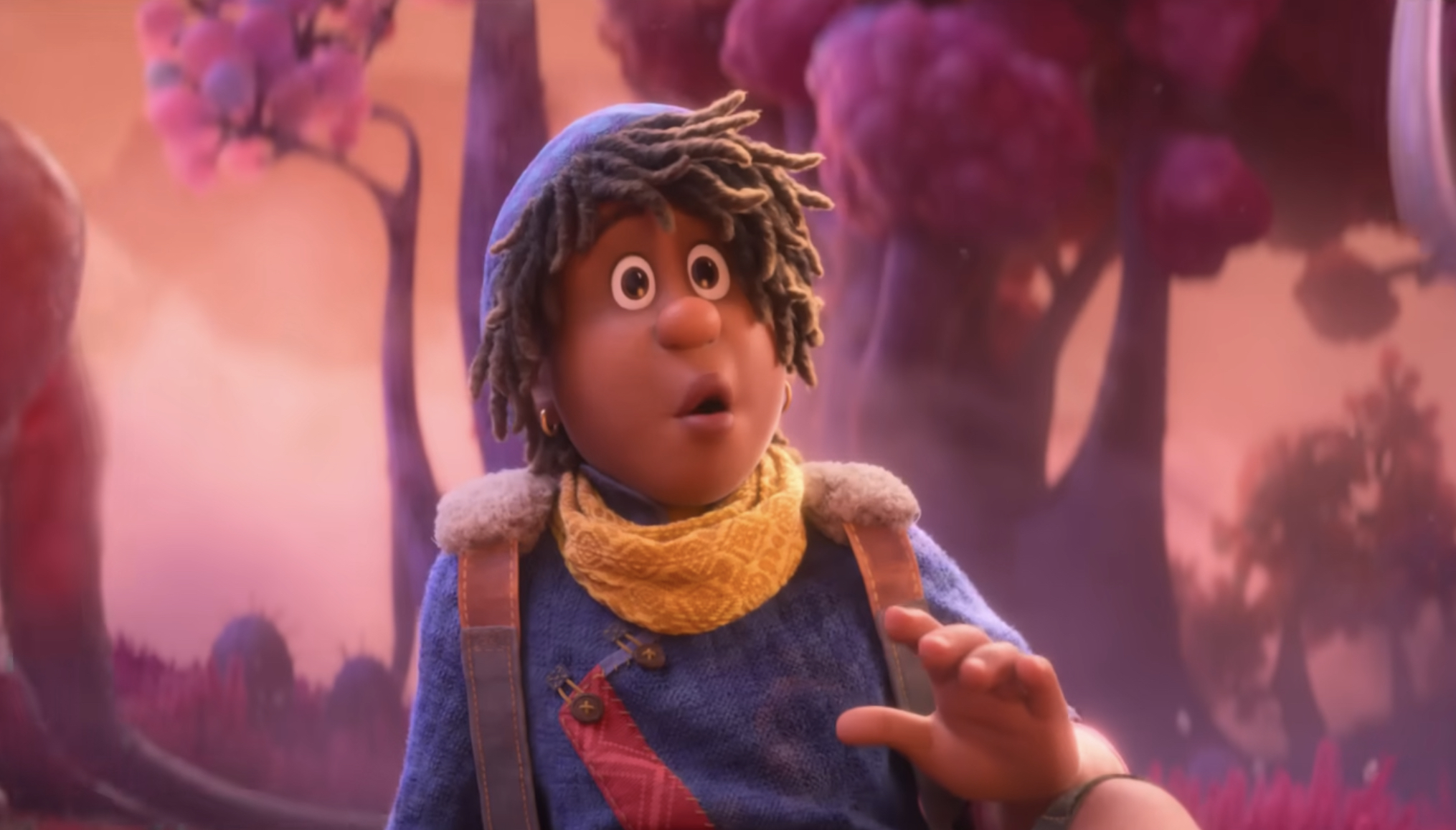
Of course, Tarzan and Atlantis were central to the planned development of the Disney brand. As Mari Ness has pointed out, Tarzan was perfectly positioned to promote Disney’s latest theme park, Animal Kingdom, which opened the previous year. Disney planned to restructure its existing Magic Kingdom theme park around Atlantis, proposing a “Fire Mountain” roller coaster to replace the “20,000 Leagues Under the Sea: Submarine Voyage” ride.
These ambitions were scuttled when Atlantis opened to underwhelming reviews and sank at the box office. A spinoff series was canned late in development, its first three episodes repackaged as a direct-to-video sequel. Disney would only release one more of these adventure narratives the following year. Treasure Planet had been many years in the making; director Ron Clements had originally pitched it at the same time as The Little Mermaid. It also underperformed at the box office.
In hindsight, this run feels like an example of Disney trying to extend its market share beyond stereotypical demographics. Pre-release polling suggested Tarzan had a broader appeal than any of Disney’s animated films since The Lion King. Disney seemed to have a particular demographic in mind. Susan King noted that Atlantis was “really geared more for boys than for families,” while Kenneth Turan described Treasure Planet as “another one for the boys.”
In the years that followed, Disney would become more overt in its calculated attempts to appeal to young boys, particularly with the launch of Disney XD and the retooling of Tangled following the box office disappointment of The Princess and the Frog. In some ways, movies like Tarzan, Atlantis, and Treasure Planet prefigure the company’s later efforts to court young boys with movies like Tron: Legacy, John Carter, and The Lone Ranger, before giving up and buying Marvel Studios and Star Wars.
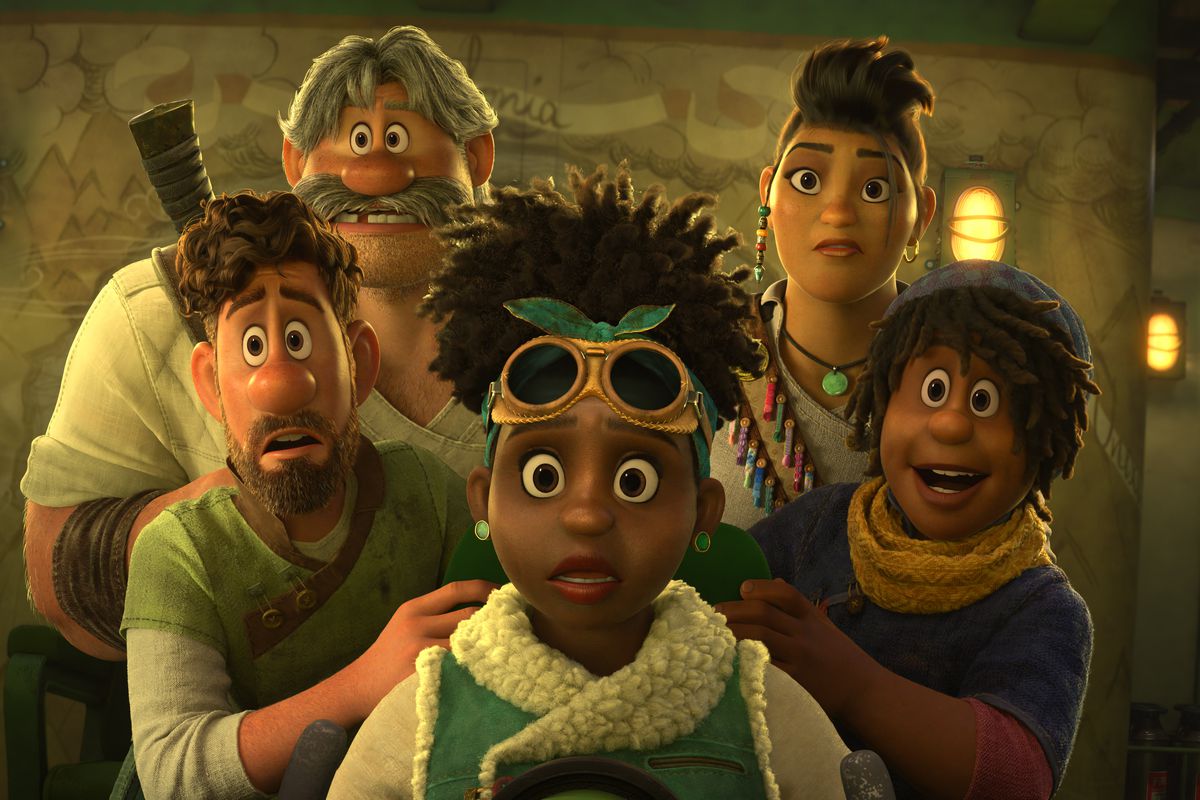
There is an uncomfortable gender essentialism underpinning this. As many have pointed out, Frozen would not have been the success that it was if boys didn’t also love it. William Goldman noted that Hollywood is a place where “nobody knows anything,” and this sort of fuzzy logic can lead to huge business decisions with no basis in reality. It doesn’t matter whether boys liked The Little Mermaid, simply that Disney assumed that they did not.
Watching Tarzan, Atlantis, and Treasure Planet, it really does feel like these movies were built around stereotypical assumptions about young boys. Notably, all three play down the musical elements of classic Disney animation. Tarzan has a soundtrack from Phil Collins, but only two diegetic songs — a lullaby and a percussion track. Treasure Planet goes further, having a single montage set to “I’m Still Here” by John Rzeznik, frontman of the Goo Goo Dolls.
These are very male-dominated films. There is a romantic subplot involving Milo Thatch (Michael J. Fox) and Princess Kidagakash (Cree Summer) in Atlantis, but the action climax transforms Kidagakash into a literal object and locks her in a crate as Milo tries to stop the villains from stealing her. When Jim (Joseph Gordon-Levitt) embarks on his adventure in Treasure Planet, he takes family friend Delbert Doppler (David Hyde Pierce) while his mother Sarah (Laurie Metcalf) waits at home.
There is a lot to like in these films, particularly as the last wave of Disney’s conventional animation, but there also are times when they awkwardly grasp at what they think “relevance” looks like for a young male audience. Treasure Planet introduces Jim on a surfboard, a character beat that comes back into play at the climax. Atlantis makes a joke riffing on the cultural ubiquity of “Lady Marmalade” in 2001. They are constantly trying, very hard.
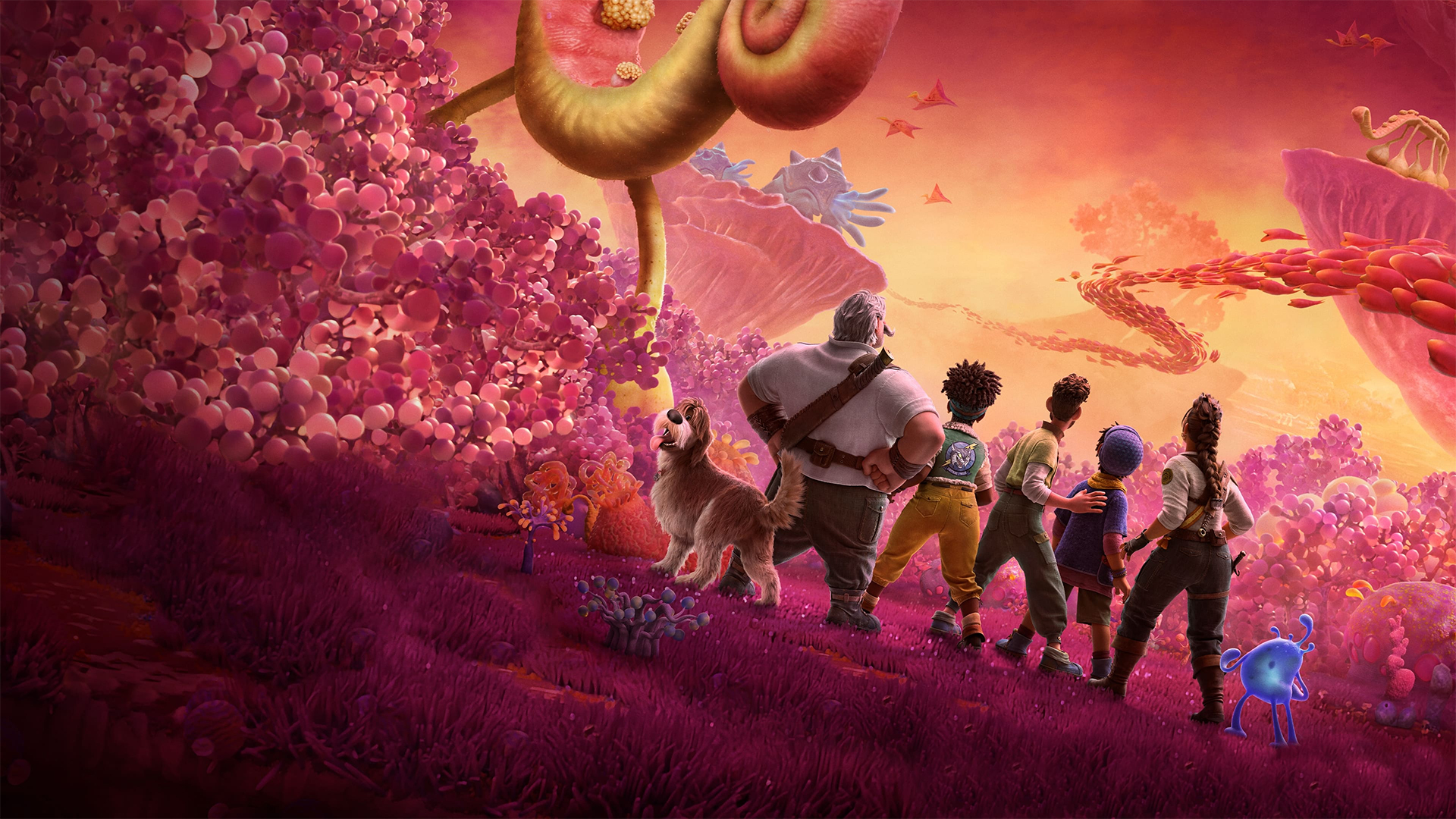
In some ways, Strange World is doing for that wave of films what the more recent female-led animated movies have done for the classic “princess” narratives, adopting a quietly radical approach. Strange World is not a musical, but it is also much more engaged with its characters’ emotional lives than Tarzan, Atlantis, or Treasure Planet. Jim spends most of Treasure Planet looking for a father figure, but those family dynamics are much closer to the surface in Strange World.
Strange World understands that these movies don’t have to make choices between clearly articulated emotional character arcs and the push for adventure. The design of Strange World is as compelling as anything in Atlantis and Treasure Planet, and its action scenes just as fun to watch. However, the Clade family feels much more developed than the leads of those previous movies, giving the movie a much cleaner emotional arc. Family is just as central here as it is in Frozen or Encanto.
The result of all this is a movie that feels like a love letter to an oft-ignored chapter of Disney’s animated output, a celebration of a wave of movies that were overlooked in the transition to computer-generated animation at the turn of the millennium. However, Strange World is also an update on that template, understanding that action-driven storytelling doesn’t preclude emotional openness. In that way, Strange World breaks new ground.

